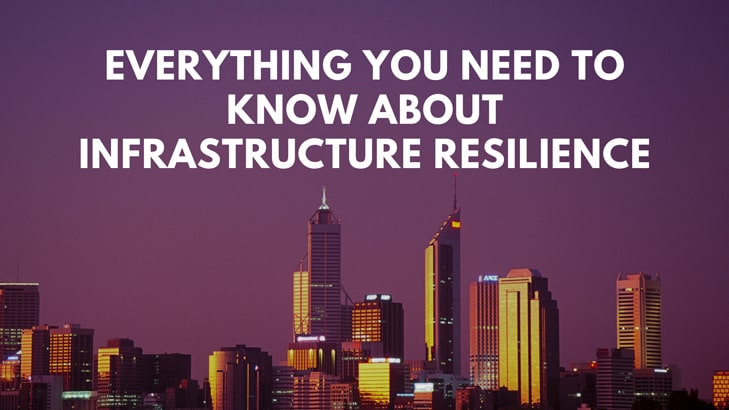As a construction company, effective management of infrastructure resilience should be at the top of your list. Creating resilient structures that are able to withstand extreme weather conditions and various environmental hazards is essential in ensuring the safety of all construction workers involved, as well as guaranteeing quality work for your clients.
To ensure you have an optimal plan in place, it’s important to understand what infrastructure resilience entails and how it impacts the success (or failure) of projects underway. This article will break down everything you need to know and how to influence better project outcomes.
If you’re looking for a better way to build your projects, consider ALICE for infrastructure. Whether you’re working on a bridge, tunnel, or railway, ALICE is the best solution to cutting back on expenses and reducing project duration to get complex projects live sooner.
Without further ado, let’s get into what you need to know about infrastructure resilience.
What is infrastructure resilience?
Infrastructure resilience is the ability of a system to maintain its essential functions and survive through periods of stress or disruption.
In the context of building construction, this means having structures that are able to withstand any natural disasters such as storms, floods, earthquakes, etc., as well as man-made events like terrorism attacks or cyberattacks. This also includes having effective ways to recover quickly after an incident occurs.
Infrastructure resilience is not a one-time process; it requires continuous monitoring and maintenance to ensure the system remains stable and functional in any given situation. It’s also important to plan ahead for potential future events, so that systems can be further strengthened or upgraded as needed.
Why is infrastructure resilience important?
Infrastructure resilience is an integral component of any construction project, as it ensures the safety and well-being of people working on-site, as well as the surrounding environment. In addition to this, failure to address potential risks can result in costly repairs or rebuilds if a disaster occurs.
Having a strong infrastructure system also helps to protect the client’s investment, as well as maintain industry credibility for both contractors and suppliers. Resilient structures result in better public perception of the building and its occupants, which can have positive effects on reputation.
How is infrastructure resilience measured?
Infrastructure resilience can be measured in terms of its ability to perform essential functions during times of stress and disruption.
The Resilience Measurement Index (RMI) in particular is a widely used tool that helps to measure the level of resilience in a given system. It looks at key criteria which include:
- Preparedness
- Mitigation measures
- Response capabilities
- Recovery mechanisms
Based on this criteria, the RMI assigns each system with a score out of 100, which allows for a comparison between different systems and the potential risks they face.
Other than that, here are some basic factors to measure resilience.
Structural integrity
The structural integrity of the building is key to any construction project’s success. This includes evaluating the overall design and any additional reinforcements needed to ensure the building’s stability. It also involves checking for structural defects that could result in weak spots or failure when stress is applied.
Material durability
The material durability of a structure is also essential in assessing its resilience. The type of materials used should be able to withstand extreme weather conditions, as well as wear and tear caused by human use. It’s important to consider the lifespan of these materials and determine if it is realistic for their intended purpose.
Adaptability of a structure
The adaptability of a structure is also crucial in assessing its resilience. This includes having the ability to adjust to changing environmental conditions or user requirements, as well as being able to quickly respond and recover after disasters occur.
Improving infrastructure resilience
There are a few key steps that can be taken to improve infrastructure resilience and ensure optimal project outcomes.
First, it’s important to identify any potential risks a structure may face in its lifetime and put measures in place to mitigate them as much as possible. This includes conducting regular inspections of the site and investing in quality materials that are able to withstand extreme weather conditions or any other environmental hazards.
It’s also beneficial to carry out research and make use of available data to further understand the potential risks a site may face in its lifetime. This allows for better decisions to be made when it comes to designing and constructing the structure.
Finally, having an effective plan in place for recovery is essential in ensuring that projects are completed in a timely manner should any unexpected events occur. This includes having access to alternative sources of materials and labor, as well as having backup plans for emergency situations.
With the right knowledge and careful planning, infrastructure resilience can be maintained at an optimal level to ensure successful project outcomes. Understanding what it takes to create resilient structures is essential in ensuring safety and quality work for all stakeholders involved.
Conclusion
In conclusion, infrastructure resilience is an important factor that needs to be taken into consideration for any building construction project. It ensures the safety and well-being of all involved, as well as protecting clients’ investments.
By understanding what it takes to create resilient structures, you can have peace of mind knowing that your projects will be completed safely and successfully.
